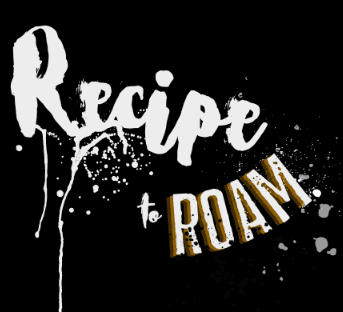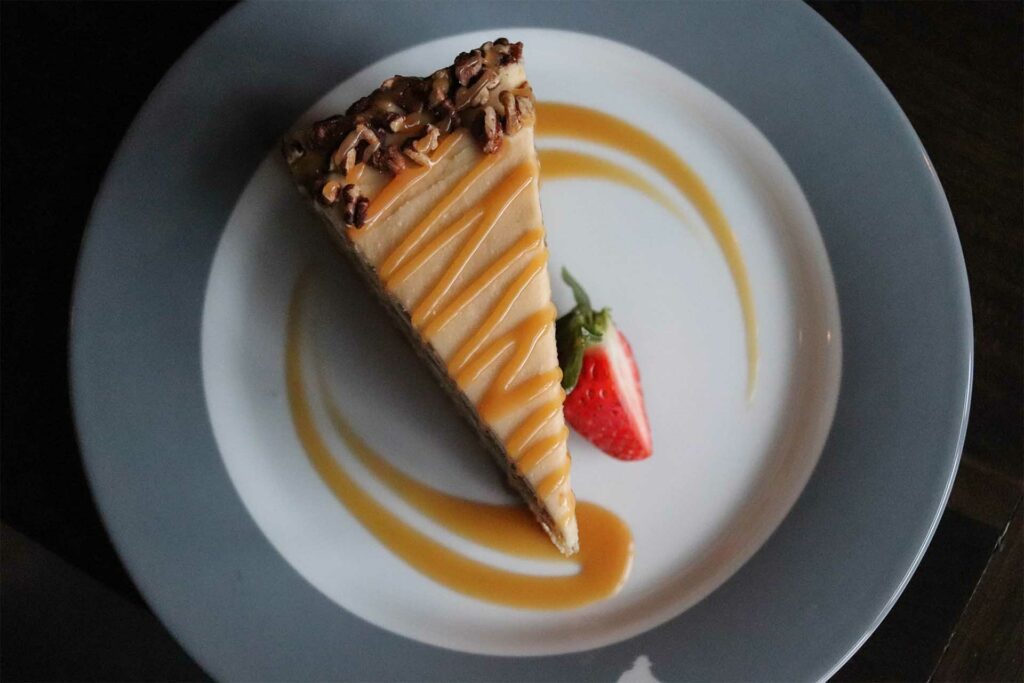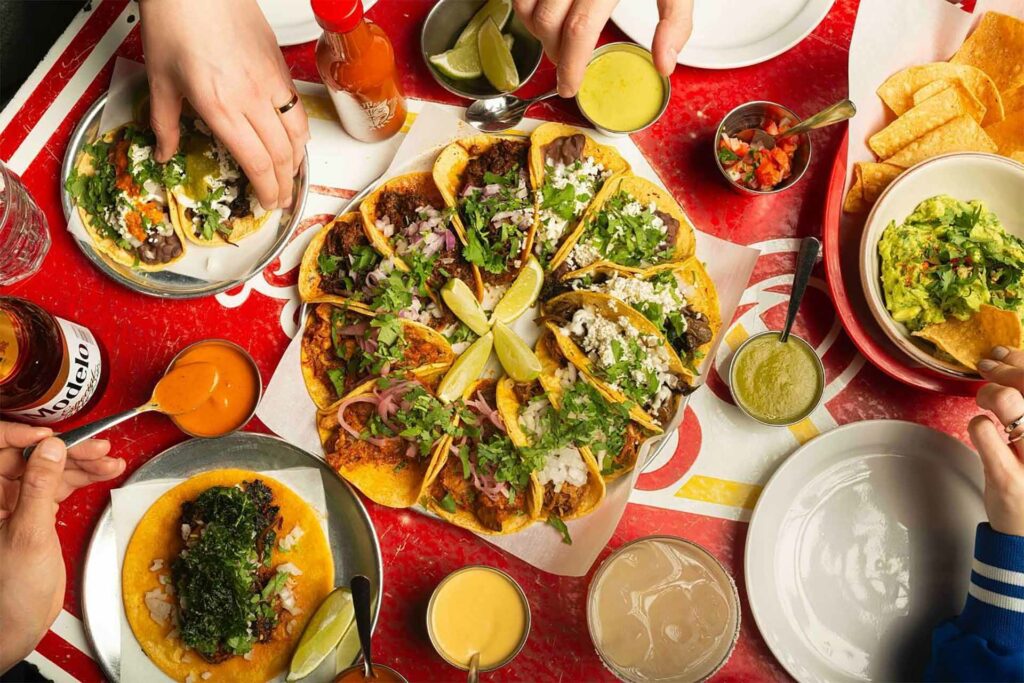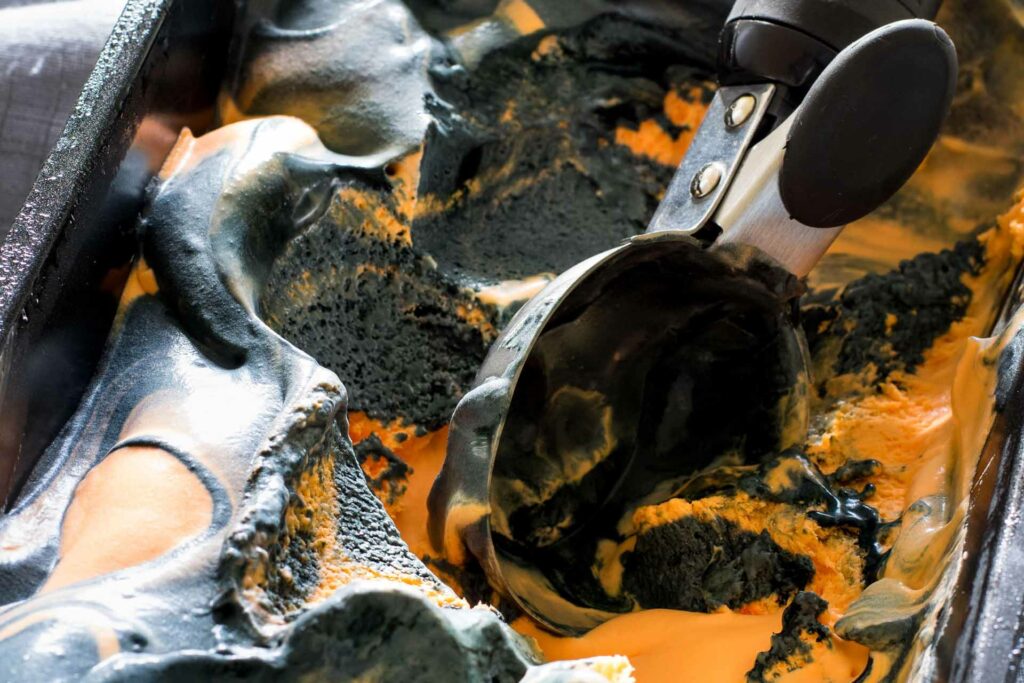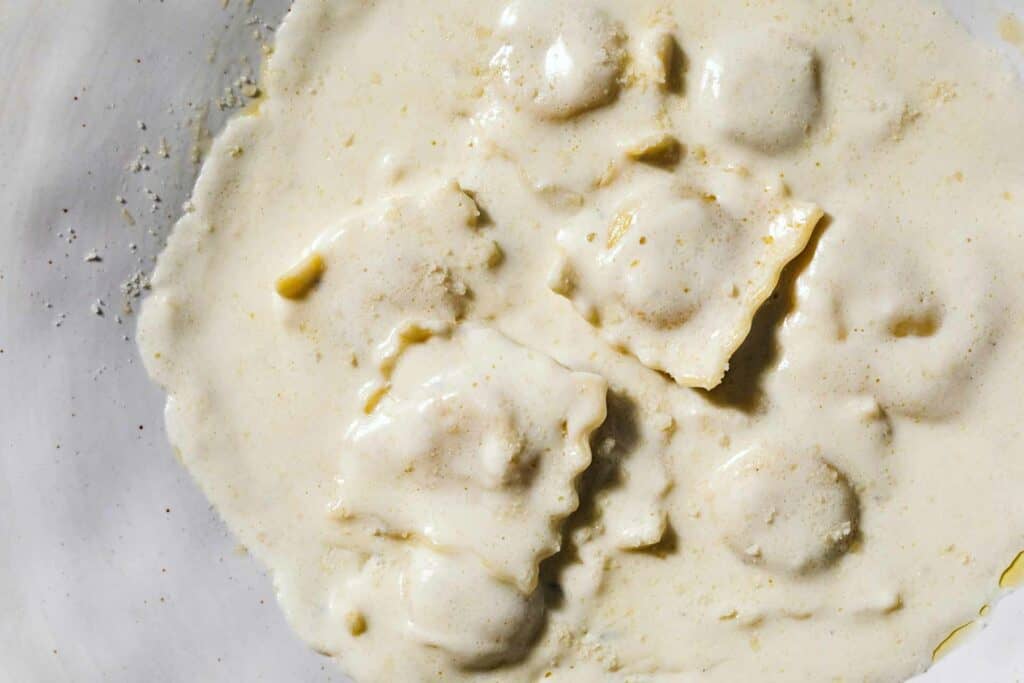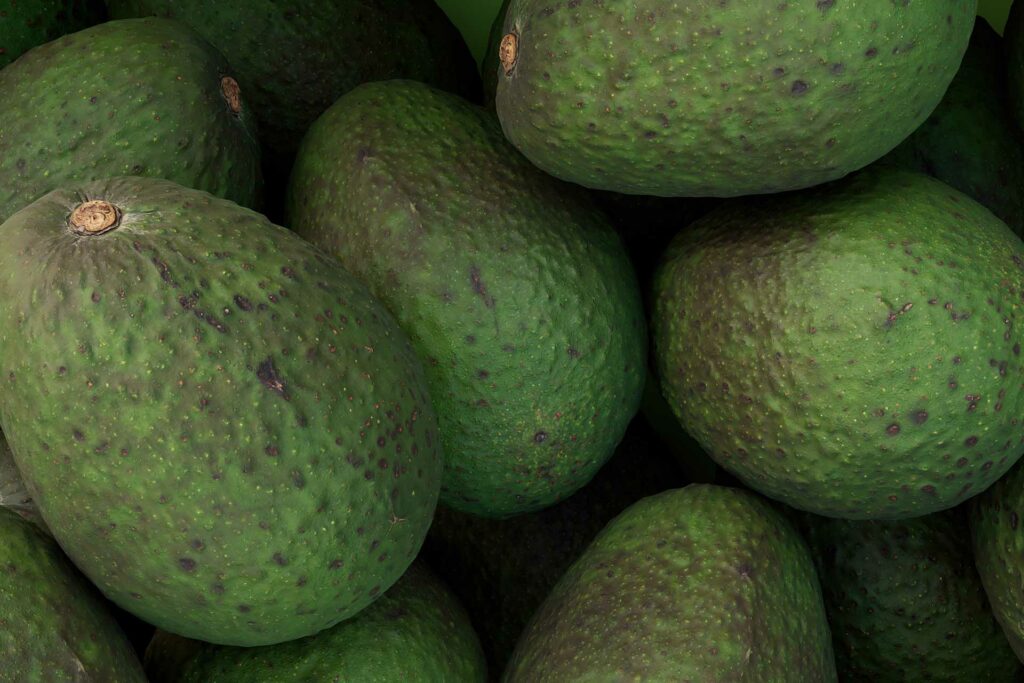When it comes to Thai cuisine, the world is captivated by the vibrant flavors and aromatic spices that make every dish an exquisite experience. Among the myriad of Thai delicacies, two dishes stand out as culinary icons: Pad See Ew and Pad Thai. These popular street food dishes have garnered immense attention and have become staples in Thai restaurants around the globe. In this comprehensive blog post, we will delve into the intriguing debate of Pad See Ew vs Pad Thai, exploring their origins, ingredients, flavors, cooking methods, and cultural context.
An Introduction to Pad See Ew and Pad Thai
Before we begin our exploration, let us first introduce these two mouthwatering dishes. Pad See Ew, also known as “stir-fried soy sauce noodles,” is a delectable Thai dish that features wide rice noodles, succulent meats or veggies, and a rich umami sauce made primarily from soy sauce. Its velvety texture and savory flavors have made it a favorite among noodle enthusiasts.
On the other hand, Pad Thai, known as the “national dish of Thailand,” is a tantalizing combination of rice noodles stir-fried with tamarind paste, fish sauce, and an array of ingredients, such as bean sprouts, peanuts, and eggs. This iconic dish, often adorned with lime wedges and fresh herbs, entices with its perfect balance of sweet, sour, and tangy flavors.
Unveiling the Stories Behind Pad See Ew and Pad Thai
To truly appreciate the nuances of these two dishes, it is important to understand their origins and cultural significance. Pad See Ew, originating from the central regions of Thailand, has its roots in Chinese cuisine. The dish was adapted to local tastes and ingredients, resulting in a unique Thai twist. In contrast, Pad Thai emerged during the 20th century as a response to the government’s campaign to establish a national Thai identity. Created by combining Chinese and Thai flavors, Pad Thai quickly gained popularity and has become synonymous with Thai cuisine worldwide.
The Battle of Flavors and Ingredients
Now, let’s embark on a culinary journey to explore the distinctive flavors and ingredients that set Pad See Ew and Pad Thai apart. Pad See Ew boasts a robust and savory taste, thanks to the generous use of soy sauce and dark soy sauce. The soft and chewy wide rice noodles soak up these flavors, creating a harmonious and satisfying dish. In contrast, Pad Thai tantalizes taste buds with its complex blend of sweet, sour, and umami flavors. The tanginess of tamarind paste mingles with the subtle sweetness of palm sugar, while the fish sauce adds a savory depth. The addition of peanuts and bean sprouts provides a delightful crunch, enhancing the overall texture and flavor profile.
Cooking Techniques and Methods
To recreate these mouthwatering dishes, understanding the traditional cooking techniques and methods is crucial. Pad See Ew is typically prepared using a high heat stir-frying method, ensuring that the ingredients are cooked quickly to retain their freshness and texture. The wide rice noodles are briefly soaked in hot water to soften before being added to the wok, where they are stir-fried with the other ingredients. Pad Thai, on the other hand, follows a similar stir-frying technique but requires a delicate balance of flavors. The noodles are soaked in warm water until pliable and then stir-fried with a medley of ingredients, allowing the flavors to meld together and create a delightful symphony on the palate.
Exploring Regional Variations
As we journey through the diverse culinary landscape of Thailand, it is important to acknowledge the regional variations that have evolved over time. In Bangkok, the heart of Thai street food, Pad See Ew and Pad Thai can be found in bustling markets and renowned restaurants. One such establishment is “Noodle House,” a hidden gem tucked away in the vibrant streets of Sukhumvit. Here, locals and tourists alike flock to savor the authentic flavors of Pad See Ew and Pad Thai, prepared with meticulous attention to detail and the freshest ingredients.
In Chiang Mai, a city known for its vibrant food scene, “Nimman Noodle Bar” takes Pad See Ew and Pad Thai to new heights. This cozy eatery offers innovative twists on these classic dishes, infusing them with local herbs and spices, elevating the dining experience to another level.
As we conclude this introduction, we invite you to join us on this culinary expedition, where we will compare and contrast Pad See Ew and Pad Thai in terms of ingredients, flavors, cooking methods, and cultural context. Get ready to tantalize your taste buds and discover the secrets behind these beloved Thai delicacies. Stay tuned for the upcoming sections where we delve deeper into the world of Pad See Ew and Pad Thai, unearthing the hidden treasures that lie within each dish.
Overview of Pad See Ew
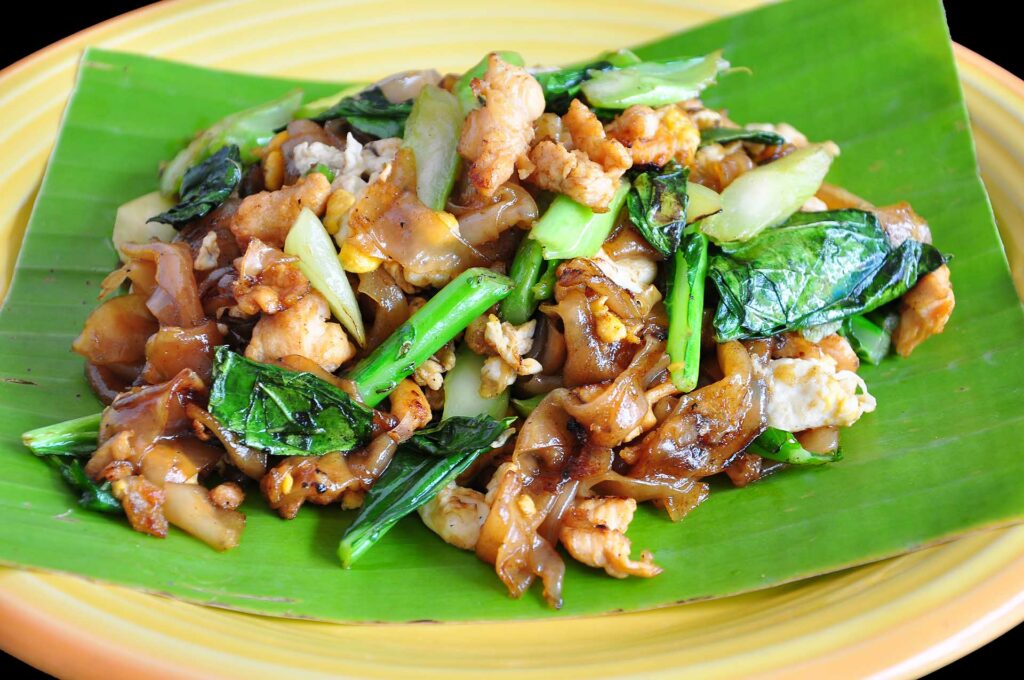
Pad See Ew, meaning “stir-fried soy sauce noodles,” is a beloved Thai dish that has gained international recognition for its rich flavors and comforting qualities. Originating from the central regions of Thailand, Pad See Ew has become a staple in Thai street food and restaurant menus worldwide. In this section, we will delve into the details of this delectable dish, exploring its ingredients, common variations, traditional cooking techniques, and notable regional adaptations.
The Ingredients that Create the Magic
At the heart of Pad See Ew lies the wide rice noodles, also known as “kuay teow sen yai.” These silky and chewy noodles provide the perfect canvas for absorbing the flavors of the dish. Other essential ingredients include dark soy sauce, light soy sauce, oyster sauce, garlic, Chinese broccoli (kai-lan), and protein options such as chicken, beef, pork, or tofu. The combination of these ingredients creates a savory and umami-packed dish that delights the senses.
Common Variations to Suit Every Palate
While the traditional recipe of Pad See Ew remains beloved, there are various adaptations to cater to different dietary preferences and regional tastes. Vegetarian versions of Pad See Ew replace the meat with tofu or an array of vegetables, such as mushrooms, bell peppers, and snap peas. Seafood lovers can savor the delights of Pad See Ew by opting for shrimp, squid, or a medley of fresh seafood. These variations add a unique twist to the dish, showcasing the versatility and adaptability of Pad See Ew.
Traditional Cooking Techniques
To prepare Pad See Ew, chefs employ high-heat stir-frying techniques that ensure the noodles and ingredients are cooked quickly and evenly. The process begins by blanching the wide rice noodles in hot water until they reach the desired texture—soft yet slightly chewy. The noodles are then drained and set aside while the wok is heated with oil. Garlic is sautéed until fragrant, followed by the addition of the protein, which is stir-fried until cooked. Next, the Chinese broccoli or other vegetables are added, lending vibrant colors and fresh flavors to the dish. Finally, the noodles are incorporated into the wok, along with the soy sauce-based sauce mixture, and everything is stir-fried together until the flavors meld harmoniously.
Notable Regional Variations
Throughout Thailand, different regions have put their own spin on Pad See Ew, resulting in unique and mouthwatering variations. In bustling cities like Bangkok, renowned restaurants like “Thonglor Noodle House” have gained fame for their exceptional Pad See Ew dishes. Here, you can experience a delightful blend of tradition and innovation, as the chefs infuse their creations with local herbs, spices, and premium ingredients.
In the northern region of Thailand, Chiang Mai, “Khao Soi Nimman” is a hidden gem that offers a twist on Pad See Ew. This charming eatery combines the flavors of Pad See Ew with the beloved regional dish, Khao Soi, creating a fusion that captivates the taste buds. The result is a tantalizing blend of wide rice noodles, creamy coconut curry, and succulent meats or vegetables.
As we conclude this section, we have explored the essence of Pad See Ew, from its core ingredients to the traditional cooking techniques that bring it to life. Join us in the next section as we dive into the realm of Pad Thai, unraveling its secrets and uncovering the stories behind this iconic Thai dish.
Overview of Pad Thai
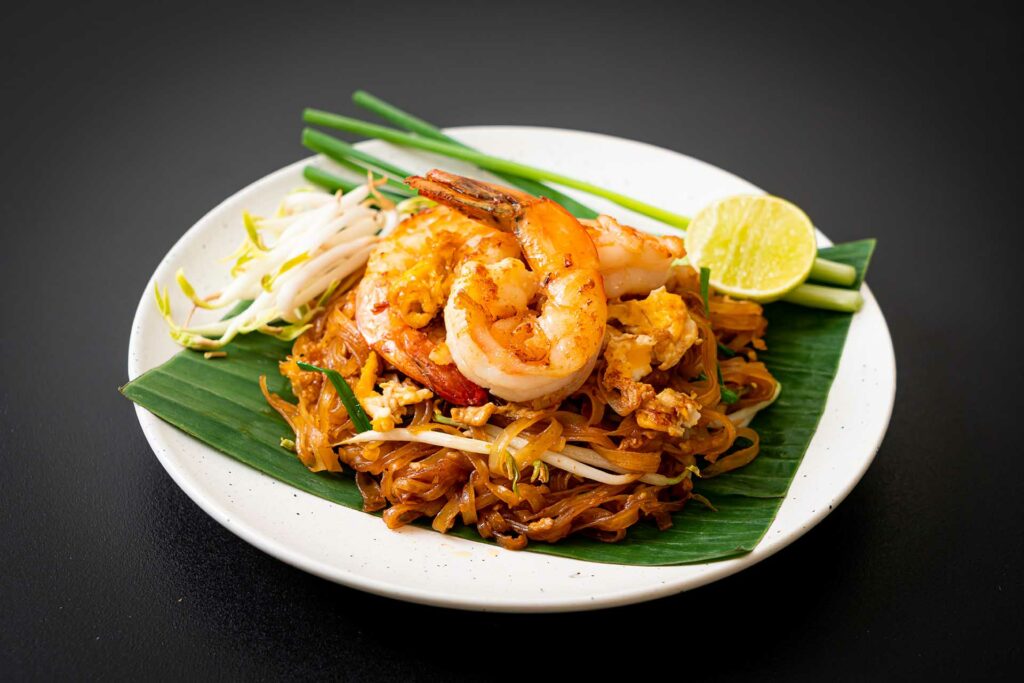
Pad Thai, often referred to as the “national dish of Thailand,” is a culinary masterpiece that has captivated the palates of food enthusiasts worldwide. Bursting with a harmonious blend of sweet, sour, and tangy flavors, Pad Thai has become synonymous with Thai cuisine. In this section, we will explore the intricacies of this iconic dish, including its ingredients, common variations, traditional cooking techniques, and notable regional adaptations.
The Essential Ingredients that Define Pad Thai
At the heart of Pad Thai lies the delicate balance of flavors derived from its key ingredients. Rice noodles, specifically the thin and flat “sen lek” variety, form the foundation of the dish. These noodles are stir-fried to perfection, absorbing the savory and tangy essence of the accompanying ingredients. Tamarind paste, the star of the show, lends its distinct sweet and sour flavor, while fish sauce adds depth and umami notes. Other essential components include palm sugar, dried shrimp, tofu, eggs, bean sprouts, garlic, and peanuts. The interplay of these ingredients creates a symphony of flavors that dance on the taste buds.
Common Variations to Suit Every Craving
Just like Pad See Ew, Pad Thai offers a plethora of variations to cater to different tastes and dietary preferences. Vegetarian versions replace the shrimp and dried shrimp with tofu or a medley of vegetables like bell peppers, carrots, and broccoli. Seafood lovers can indulge in the delights of seafood Pad Thai, which features a combination of shrimp, squid, and mussels. Some establishments even offer fusion variations, blending international flavors with the traditional Pad Thai concept. These adaptations showcase the versatility and adaptability of Pad Thai, making it accessible to a wide range of food lovers.
Traditional Cooking Techniques
To create an authentic Pad Thai, skilled chefs employ a delicate balance of heat and timing. The process begins by soaking the rice noodles in warm water until they soften, ensuring they retain a slight chewiness when cooked. In a hot wok, oil is heated, and garlic is sautéed to release its aromatic essence. The protein, typically tofu or shrimp, is added and cooked until tender. Next, the eggs are scrambled and pushed to the side of the wok, making way for the noodles. The tamarind paste, fish sauce, and palm sugar are then added, coating the noodles and infusing them with their distinct flavors. Finally, the bean sprouts, chives, and crushed peanuts are tossed in, adding freshness, crunch, and texture to the dish. The result is a vibrant and visually appealing plate of Pad Thai ready to be savored.
Notable Regional Variations
As we explore the regional adaptations of Pad Thai, we find that each locale adds its unique touch to this beloved dish. In the heart of Bangkok, Thip Samai, known as the “Pad Thai King,” is a legendary restaurant that has perfected the art of Pad Thai. Patrons flock to this iconic establishment to witness the skilled chefs expertly stir-frying individual portions of Pad Thai on enormous charcoal-fired griddles, infusing the dish with a smoky aroma that elevates the dining experience.
In Ayutthaya, a city steeped in history, Boat Noodle Alley offers a unique twist on Pad Thai. Here, the classic Pad Thai flavors are transformed into a noodle soup, served in small bowls reminiscent of the traditional boat noodles. This variation showcases the adaptability of Pad Thai, proving that even a slight alteration can yield a delightful and satisfying dish.
As we conclude this section, we have explored the essence of Pad Thai, from its key ingredients to the traditional cooking techniques that bring it to life. Join us in the next section as we embark on a comparative journey, unraveling the differences and similarities between Pad See Ew and Pad Thai, and understanding the cultural context that surrounds these iconic Thai dishes.
Comparison between Pad See Ew and Pad Thai
The debate between Pad See Ew and Pad Thai has long intrigued food enthusiasts, leaving them pondering the differences and similarities between these two beloved Thai dishes. In this section, we will embark on a comparative journey, exploring the flavor profiles, texture contrasts, ingredient choices, cultural contexts, and dispelling any misconceptions or myths surrounding Pad See Ew and Pad Thai.
Flavor Profiles: Savory vs. Sweet and Tangy
One of the key distinguishing factors between Pad See Ew and Pad Thai lies in their flavor profiles. Pad See Ew, with its generous use of soy sauce and dark soy sauce, offers a savory and umami-packed experience. The flavors are rich, robust, and deeply satisfying. On the other hand, Pad Thai tantalizes the taste buds with a delicate balance of sweet, sour, and tangy notes. The tamarind paste provides a subtle sourness, while the palm sugar adds a hint of sweetness. The combination of these flavors creates a unique and addictive taste that has made Pad Thai a global favorite.
Texture Contrasts: Soft vs. Chewy Noodles
Another aspect that sets Pad See Ew and Pad Thai apart is the texture of the noodles. In Pad See Ew, the wide rice noodles are soft and slightly chewy, absorbing the flavors of the dish and providing a comforting mouthfeel. On the other hand, Pad Thai features thin rice noodles that have a more delicate and tender texture. They are lighter and less chewy than the wide rice noodles, offering a different textural experience that complements the flavors of the dish.
Ingredient Choices: Soy Sauce vs. Tamarind Paste
The choice of ingredients is crucial in differentiating Pad See Ew from Pad Thai. While both dishes share common elements such as rice noodles and protein options, the sauces used in each dish create distinct flavors. Pad See Ew relies heavily on soy sauce and dark soy sauce, which contribute to its savory and rich taste. On the other hand, Pad Thai showcases the tangy flavors of tamarind paste, creating a unique sweet and sour combination. The sauces play a significant role in defining the character of each dish and setting them apart from one another.
Cultural Context: Regional Origins and Significance
Understanding the cultural context of Pad See Ew and Pad Thai adds depth to the debate. Pad See Ew, with its Chinese origins, showcases the influences of Chinese cuisine on Thai culinary traditions. Over time, it has become an integral part of Thai street food culture, enjoyed by locals and visitors alike. Pad Thai, on the other hand, emerged during the 20th century as a response to the government’s initiative to establish a national Thai identity. It was created by blending Chinese and Thai flavors, and its popularity quickly soared, making it an iconic representative of Thai cuisine on a global scale.
Debunking Misconceptions and Myths
As with any popular dishes, misconceptions and myths often surround Pad See Ew and Pad Thai. One common misconception is that Pad See Ew is simply Pad Thai with wider noodles. While both dishes share similarities in terms of ingredients and cooking methods, they differ significantly in flavors and cultural context. Another myth is that Pad Thai is the more authentic or traditional Thai dish. In reality, both Pad See Ew and Pad Thai have their roots in Thai culinary history and have evolved as cultural icons over time.
As we conclude this section, we have explored the comparisons between Pad See Ew and Pad Thai, delving into their flavor profiles, texture contrasts, ingredient choices, cultural contexts, and debunking any misconceptions or myths. Join us in the next section as we provide our personal preferences and recommendations for trying these delightful Thai dishes, and offer final thoughts on the debate of Pad See Ew vs. Pad Thai.
Personal Preferences and Recommendations
As we near the end of our exploration of Pad See Ew and Pad Thai, it’s time to share our personal preferences and recommendations based on our culinary experiences. While both dishes have their own unique charm, there may be instances where one might be more enticing than the other, depending on individual preferences and cravings.
Recommendations for Pad See Ew
If you find yourself craving a hearty and savory dish with a satisfying chewiness, Pad See Ew is the perfect choice. The combination of wide rice noodles, soy sauce, and dark soy sauce creates a robust and comforting flavor profile that is difficult to resist. For those who prefer a vegetarian option, Pad See Ew can be easily adapted by substituting the protein with tofu or an assortment of fresh vegetables. The addition of mushrooms, bell peppers, and snap peas can add depth and variety to the dish, making it a delightful choice for vegetarians.
When it comes to enjoying Pad See Ew, we recommend seeking out authentic Thai restaurants that specialize in street food. These establishments often have skilled chefs who have mastered the art of stir-frying, ensuring that you experience the true essence of this beloved Thai dish. Bangkok’s “Thonglor Noodle House” is a popular choice among locals and tourists alike, offering an extensive menu of delectable Pad See Ew variations that will satisfy even the most discerning palate.
Recommendations for Pad Thai
For those craving a harmonious blend of sweet, sour, and tangy flavors, Pad Thai is the ultimate choice. The delicate balance of tamarind paste, palm sugar, and fish sauce creates a symphony of taste that is both unique and addictive. Traditional Pad Thai with shrimp and tofu is a classic choice, offering a delightful combination of textures and flavors. However, if you prefer a vegetarian option, Pad Thai can be customized by replacing the protein with tofu or a medley of colorful vegetables.
To truly appreciate the beauty of Pad Thai, we recommend exploring renowned Thai restaurants that have perfected this iconic dish. In Bangkok, a visit to Thip Samai, known as the “Pad Thai King,” is a must. Witness the skilled chefs expertly stir-frying individual portions of Pad Thai on enormous charcoal-fired griddles, creating a smoky aroma and a theatrical dining experience that will leave you in awe. Another noteworthy destination is Boat Noodle Alley in Ayutthaya, where you can savor the unique twist of Pad Thai transformed into a noodle soup, served in small bowls reminiscent of the traditional boat noodles.
Final Thoughts on the Debate
The debate between Pad See Ew and Pad Thai is not about one dish being superior to the other but rather about celebrating the diversity and richness of Thai cuisine. Both dishes have their own unique characteristics, flavor profiles, and cultural significance. The choice between Pad See Ew and Pad Thai ultimately comes down to personal preferences, cravings, and the desire to explore the depth and variety of Thai culinary traditions.
As we conclude this blog post, we encourage you to embark on your own culinary adventure and try both Pad See Ew and Pad Thai. Whether you find yourself drawn to the savory and chewy delights of Pad See Ew or the sweet and tangy symphony of Pad Thai, you are sure to experience the essence of Thai cuisine and the rich tapestry of flavors that make it so beloved worldwide.
